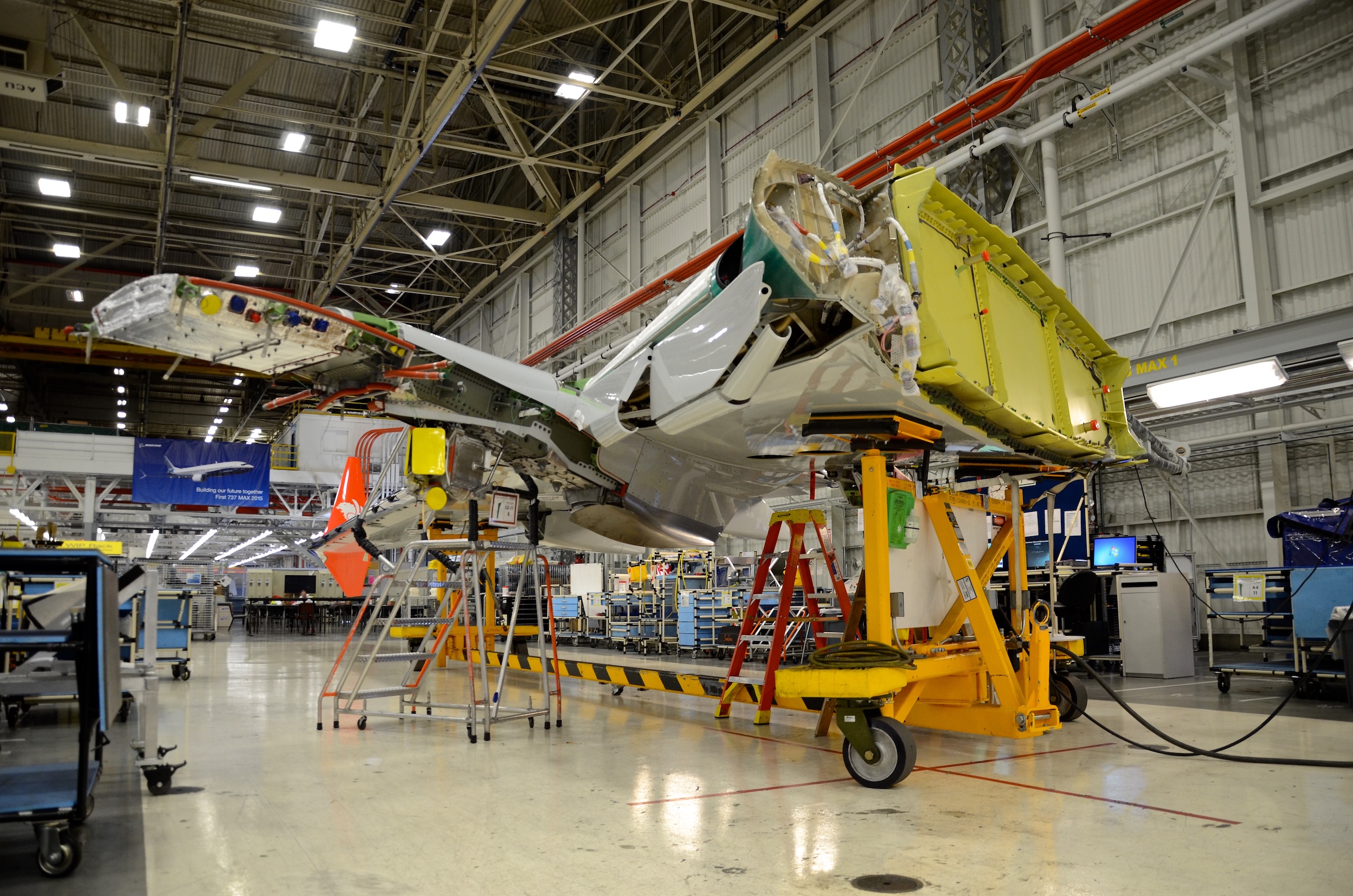Log-in here if you’re already a subscriber
This story has been updated.
In February, Boeing moved to advance production of the 737 Max to 38 airplanes each month. The production system that assembles wings for each single-aisle airplane in Renton, Washington briefly reached that rate, having jumped from 31 airplanes per month. But as the company advanced to a pace not seen this decade, the cumulative unfinished assembly tasks, known as jobs behind schedule (JBS), for installing systems in the wings being built in the factory spiked sharply. According to those familiar with its factory progress, Boeing quickly pulled back, returning the factory to a pace of building 31 airplanes per month to keep from derailing the assembly line.
Those wing systems installation issues have persisted through March with JBS continuing to climb steadily, the people said. The company is pulling in help from across the factory and is further slowing parts of its wing production earlier in the process to allow machinists to catch up and wrangle the bottleneck, which one of the familiar people called “a significant backlog of work that needs to get done to get caught up to schedule.”
Related: Boeing charts ‘aggressive’ 737 Max production ramp-up in 2025
Despite this, the company is still touting significant progress toward demonstrating the steadiness of its ramp-up to suppliers, according to one executive leader at a major Boeing supplier. “They’re executing better than we thought they would,” the executive said, but added, “It’s fragile.”
That sentiment is expressed by regulators, too. In his first interview since taking the job in January, acting Federal Aviation Administration chief Chris Rocheleau told The Air Current he feels Boeing is “on the right path” to resolving long-standing manufacturing quality issues, but offered a caveat that the plane maker “still [has] a way to go” before his agency will feel comfortable approving production rate increases beyond 38 per month on the company’s 737 Max production line in Renton.
Boeing when it ended 2024 had charted what was described as an “aggressive” ramp-up in 2025 on its way back to producing 38 airplanes per month and beyond, a rate not seen this decade but one viewed as a key financial milestone that would help it return to positive cashflows and currently the maximum throughput allowed by the FAA. TAC reported in December that Boeing had wanted to be rolling out 38 737s each month starting in March and delivering at that pace by May, but industry executives say that plan has shifted further into 2025 with the still-unfolding headaches. That plan also had Boeing exiting 2025 running at Rate 42.
“As we have said, our team continues to focus on production stability and quality as we methodically increase 737 production,” the company said in a brief emailed statement to TAC following publication. “The 737 program has not reached rate 38 this year and the program has not reduced its rate.”
At all the various stages of an airplane production system like Boeing’s, different parts of the chain operate at different speeds, progressively advancing to a higher rate step-by-step, eventually reaching final assembly. A new rate is only considered fully achieved when an airplane built at its target rate is delivered.
Subscribe to continue reading...Subscribe to Continue Reading
Our award-winning aerospace reporting combines the highest standards of journalism with the level of technical detail and rigor expected by a sophisticated industry audience.
- Exclusive reporting and analysis on the strategy and technology of flying
- Full access to our archive of industry intelligence
- We respect your time; everything we publish earns your attention


